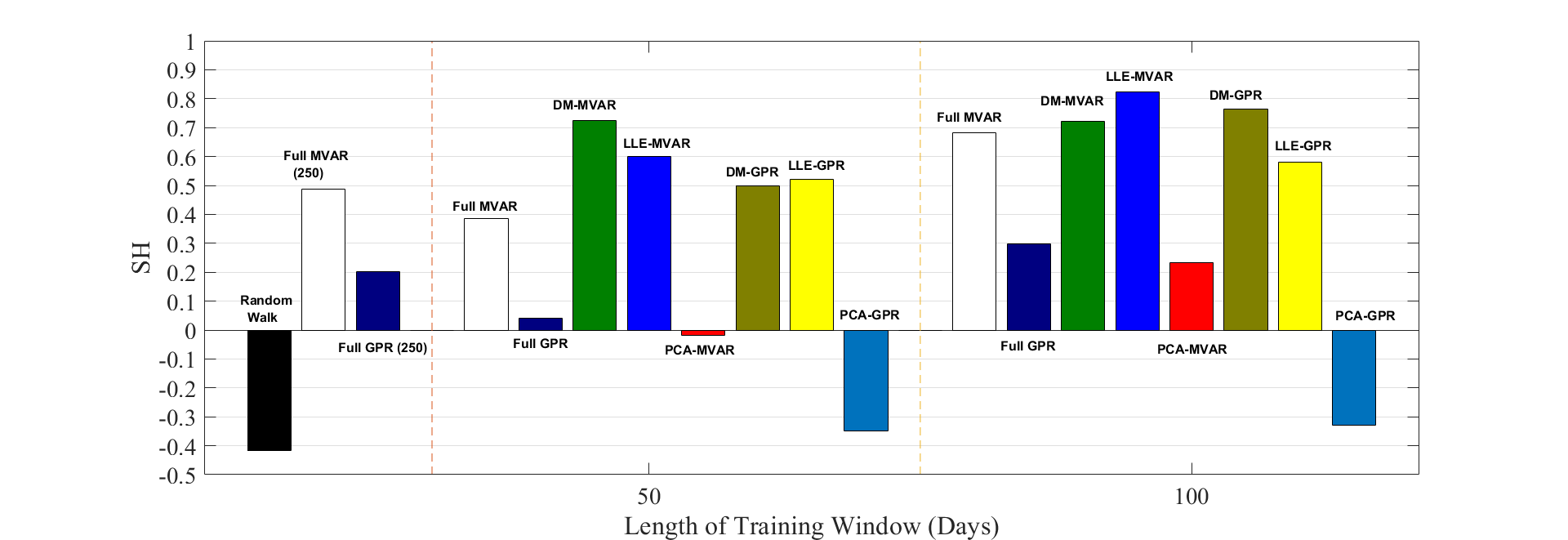We address a three-tier numerical framework based on manifold learning for the forecasting of high-dimensional time series. At the first step, we embed the time series into a reduced low-dimensional space using a nonlinear manifold learning algorithm such as Locally Linear Embedding and Diffusion Maps. At the second step, we construct reduced-order regression models on the manifold, in particular Multivariate Autoregressive (MVAR) and Gaussian Process Regression (GPR) models, to forecast the embedded dynamics. At the final step, we lift the embedded time series back to the original high-dimensional space using Radial Basis Functions interpolation and Geometric Harmonics. For our illustrations, we test the forecasting performance of the proposed numerical scheme with four sets of time series: three synthetic stochastic ones resembling EEG signals produced from linear and nonlinear stochastic models with different model orders, and one real-world data set containing daily time series of 10 key foreign exchange rates (FOREX) spanning the time period 19/09/2001-29/10/2020. The forecasting performance of the proposed numerical scheme is assessed using the combinations of manifold learning, modelling and lifting approaches. We also provide a comparison with the Principal Component Analysis algorithm as well as with the naive random walk model and the MVAR and GPR models trained and implemented directly in the high-dimensional space.
翻译:我们处理基于高维时间序列预测的多方面学习的三层数字框架。 在第一步,我们用非线性多元学习算法,例如局部线性嵌入和扩散地图,将时间序列嵌入一个低维空间。在第二步,我们在元数上,特别是在多变量自动递退模型和高西亚进程递退模型上,构建一个减序回归模型,以预测嵌入的动态。在最后一步,我们用Radial BasicCyporation interpoluation和几何调调调调将嵌入的时间序列移回原高维空间。关于我们的插图解,我们用四套时间序列来测试拟议数字计划的预测性能:三个合成相近级模型,以不同模式的线性和非线性自动递增模型生成的EEGEG信号,以及一套包含10个关键汇率日间时间序列的实时数据集。 模拟模型的预测性能表现,与经过培训的GMV高分辨率模型相结合,还用经过我们培训的升级和不断演算的进度模型进行了直接评估。






